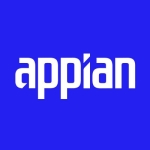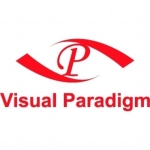In my case, representing the procurement department, we use it now for process mapping of all procurement processes, such as source to contract, procure to pay, and supplier management. First, we map and analyze the current process, then we determinate situations that can be optimized or improved based on our process mapping.
We knew we needed to invest in Signavio because we are a large company with around 15,000 employees and multiple departments. It was impossible to have an overview of all the processes that we have, including processes that are linked to each other and that we might have in Excel, Word, or PowerPoint. How do you bring all of these together to identify possible redundant or contradictory processes? Putting everything into one solution gives us the efficiency of mapping everything and knowing where we might need to focus to make it easier, faster, and leaner for everyone.
In terms of how Signavio has improved our organization, take our supplier onboarding process, to name one concrete example. In the past it took around 18 steps, so we mapped them in scenarios to identify double work, reworks, and things that took much more time than they should. Today, if I look at the new process thanks to Signavio, we were able to reduce it from 18 steps to six, so you can imagine the amount of effort reduced, in terms of people touching the process and time touching the process. This is an example of how we use Signavio to reduce process cycle times.
The solution enables us to carry out the entire process improvement life cycle in a unified hub, because we have all the processes mapped so we can check at the lowest level of detail. We do not only see the process overview but even the activity or task level.
I think the solution's functionality provides everyone in our organization what they need. I am not a superuser, but more of a standard user. For the requirements we have today, at least in my team, we are covered.
I do not use the process intelligence function personally, but my team uses it. Of course, it has affected the way we approach business transformation. We use Signavio to map our processes and identify bottlenecks, double work, and reworks. We eliminate those and make the transformation from a bureaucratic process to a user and customer-friendly process. We don't use it on a daily basis, but we do use it on a regular basis to identify these issues.
The process intelligence has also provided insights into how our organization is actually operating. One example could be that by identifying our processes, we can identify how we organize our team. If you optimize certain processes, you might need fewer resources and you can allocate those resources in areas of the process where you might need more support.
Signavio enabled us to identify a few processes that could be improved. We removed a bottleneck by mapping the process and using the intelligence module, in order to identify where it was redundant. We then removed parts of the process to make it leaner. Another example is on the compliance side, where Signavio helped us identify that we did not check all checkpoints in the process so we could be leaner and even more compliant.
The solution has improved employees' workday functions. By reducing bottlenecks, reworks, mistakes, and unnecessary activities, employees can focus on adding more value activities and eliminating or at least reducing non-value-added activities.
The collaborative features helped our team create a process-centric mindset because there's no process in any company that is not cross-functional. Every process touches another function. Taking the same example of supplier onboarding, it enforced the collaboration between accounting and procurement, minimized the effort, and therefore made the collaboration even smoother because you don't fight about bottlenecks on the reworks. You have one lean process from both sides.
There are many valuable features, of course. I would say the main value of Signavio is to have your current process map in a way that is easy to read and derive optimization actions to make it leaner, faster, more user-friendly, etc.
Another great feature is the visualization, which is easy to see and read. How they map the process is also very user-friendly, with drag-and-drop functionality. Also, it's a very self-explanatory, user-friendly solution.
I would rate Signavio's ease of use as eight to nine out of ten. I am not a process management expert, but more of a business expert, yet I don't need much training to use it.
In terms of process modeling and automation, I can only speak on the process mapping feature, because that is the area I'm responsible for. I would rate it at a very, very high level. Besides ease of use, it is actually very professional in terms of its visualization. We even use it for external compliance audits and the like.
I would like to see more predictive analytics. The tool already has all the process maps, but it could offer a more proactive improvement offering. For example, they could put a little bit more machine learning behind it.
I am not a technical person, but so far I have not seen any performance problems.
As we mapped all of our process, we started with the simple ones and we've scaled up to the complex ones. As of today we have all of our process in.
For me it sounded simple, but I don't know if the people behind it found it to be complex.
It is difficult to specify how much money we have saved in Euros, but I can name you as a percentage. I think Euros depends on the volume, but a percentage is determined more by the specific use case. In the case of supplier onboarding, we reduced the time from around six days of onboarding a supplier to a 24-hour service level.
I think that this solution makes a lot of sense if you want to integrate many processes. If you do it for a single process, you might get some advantage, but you will not get the most out of this solution, which is made for bringing in different topics and processes and mapping them together. It also helps you decide where to split or eliminate roadblocks in order to make it leaner. The more processes you put in, the more Signavio makes sense.
I would rate it between eight and nine points out of ten. I think it's a super-advanced, easy to use solution that brings added value that we need. As a non-key user, but someone who uses the system from time to time for needs that we have, I find it to be a great solution.

















